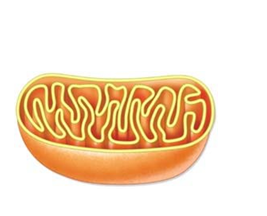Current research indicates that hominins originally evolved in which continent?
A) Australia
B) Europe
C) Africa
D) Asia
E) North America
C
You might also like to view...
Which of the following statements about differentiated cells is not correct?
A. Transfer of a nucleus from a fully differentiated cell into an unfertilized egg with no nucleus can support the development of an entire organism. B. Cells become differentiated because of changes in nuclear gene expression. C. Cells become differentiated because genes that are not being expressed are deleted. D. Differentiated cells contain a complete genome. E. Mammals have been cloned from completely differentiated cells.
Chemical communication can also occur locally between neighboring cells, or between individuals, through the release of pheromones, coordinating social interactions. The figure below shows epithelial cells in the lungs
When the epithelial monolayer is damaged by mechanical injury, breaching of the barrier allows epithelial cells to sense injury and initiate a repair pathway. When the ligand binds its receptor, it triggers a signaling cascade that stimulates cell division. The ligand (heregulin) is produced by these same cells that produce the receptor, but is released only on the apical side of the epithelium. Mechanical damage allows molecules from apical and basal surfaces to mix. The signaling is best described as: A. paracrine. B. autocrine. C. endocrine. D. synaptic.
Answer the following statements true (T) or false (F)
1. This diagram shows the chloroplast, in which aerobic respiration takes place.

2. Because clindamycin and similar antibiotics bind to bacterial ribosomes, they work by inhibiting translation in the bacterial cells.
3. There are only two main types of RNA, tRNA and rRNA, needed to make proteins.
4. Transcription is the process by which cells use the information of RNA molecules to make proteins.
5. Transfer RNA delivers amino acids to the ribosome during protein synthesis.
At night, faint objects are best seen when not looked at directly. What is the basis of this phenomenon?
A. Cone photoreceptors are most sensitive in dim light, and few cones are present in the fovea. B. Cis-retinal builds up in the fovea at night and is degraded during the day. C. Rod photoreceptors are most sensitive in dim light, and few rods are present in the fovea. D. Rhodopsin is transported away from the fovea at night.